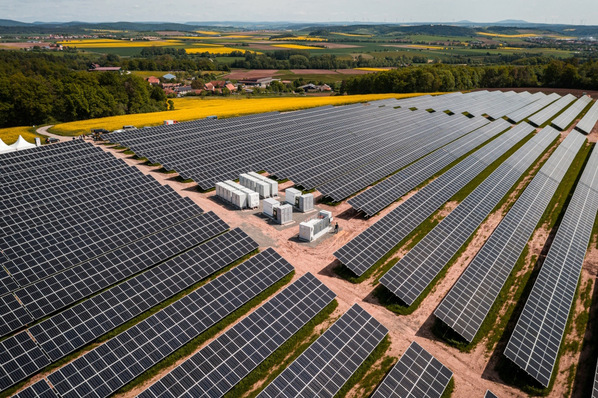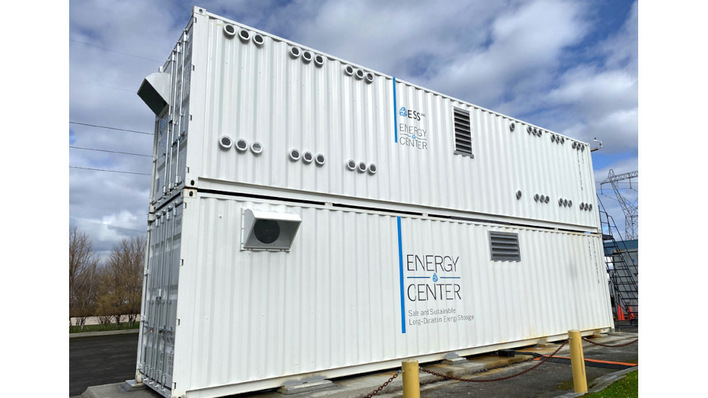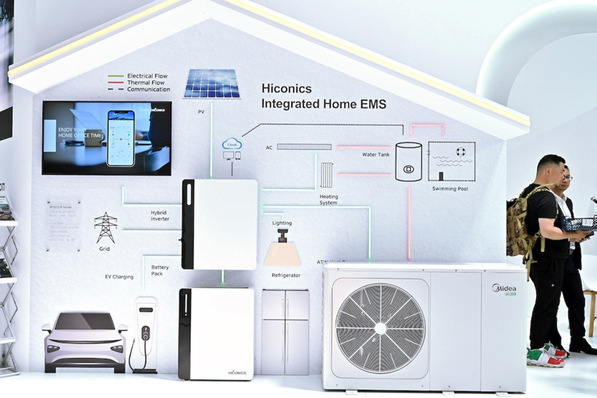Managing this complex system is one of the central challenges of the energy transition and a prerequisite for maintaining stable power grids in the future. This is where the reorganized international energy exhibition EM-Power Europe comes in. From June 9–11, 2021, key players in the new energy world will gather in Munich to present technologies and solutions related to energy management, integrated energy solutions and smart grids, thereby connecting the sectors of the new energy world.
Given its goal of synchronizing energy production in terms of both time and place, the energy transition would be unthinkable without digitalization. In order for the electricity market to take energy flows into account and react to environmental influences such as changing weather conditions, smart grids must know exactly how much energy is being consumed where as well as how much is being produced, and must be able to translate this information into flexibility signals. That’s why weather forecasts and yield forecasts for photovoltaics and other power generation systems, along with load forecasts on the consumption side, are so important. “The better we can communicate the weather-related flexibility needs of the grid to the electricity market, the better the market can do its part to promote grid stability,” explains Robert Busch, CEO of the German Association of Energy Market Innovators (bne).
Alongside optimized load management forecasts, improvements in weather and yield forecasting can help to stabilize power grids, especially at the level of the distribution grid. They are also a key component of smart grids. When such forecasts are integrated into smart generation and load management strategies, they can ensure that existing grid capacity is more fully exploited, thereby minimizing the need for expansion. Thanks to digitalization and artificial intelligence, these forecasts are becoming more and more accurate.
Improved marketing on the energy exchange
Trianel, a public utility cooperative that is active throughout Germany, is one company that is turning to AI. Its cloud-based solution and self-learning algorithms gather and analyze generation and weather data in real time from wind and photovoltaic installations boasting more than three gigawatts of capacity in total, and compare these with historical weather data. The resulting forecasts for short-term changes in yield are up to 20 percent more accurate than previous approaches, which makes it easier to market the power on the energy exchange and allows operators to more accurately calculate the profitability of an installation. Improving forecast accuracy also facilitates the integration of volatile wind and solar power into the energy system, ensuring stable power grids and a secure supply of energy.
More accurate forecasts of photovoltaic yields
As part of the PermaStrom project, which focuses on using photovoltaic yield forecasts to better manage the effect of atmospheric aerosols on German and European power grids, a team of researchers from the Karlsruhe Institute of Technology (KIT), the German weather service DWD and meteocontrol, a provider of monitoring and yield forecasting services, are investigating how grains of sand and tiny particles of ash and dust in the atmosphere influence cloud formation and thus photovoltaic yields. The research relies on measurement data from weather stations as well as satellite data. More accurate photovoltaic yield forecasts can also benefit grid management by providing grid operators with new forecast models. The project is supported by transmission system operators Amprion, 50Hertz and EnBW.
Using grid analysis to identify bottlenecks early on
Better forecasts will also help grid operators meet the new legal requirements for managing grid congestion (Redispatch 2.0), which take effect on October 1, 2021. While redispatching was previously required only for conventional power generation systems with more than 10 megawatts of capacity, the new requirements will also apply to systems for generating renewable power as well as energy storage systems and cogeneration plants with more than 100 kilowatts of capacity. Predicted load profiles for generation plants and electrical devices will be used to prepare grid analyses that can help identify congestion early on, allowing for preemptive measures to be taken. Such an approach requires uniform standards for data exchange as well as automated, digital data delivery, which presents a significant challenge for smaller distribution system operators in particular. In order to develop solutions such as a common software program, German grid operators are collaborating as part of the nationwide project “Connect+.”
An even broader range of topics at EM-Power Europe 2021
To ensure a functional future energy supply, cross-sector and intelligently linked concepts and solutions will be needed. This is where the reorganized EM-Power Europe comes in. From June 9–11, 2021, the international energy exhibition in Munich will draw companies competing to shape the new energy world – from market leaders to start-ups – to present their innovative products and integrated energy solutions. Starting in 2021, smart grids and the integration of renewable energies as well as grid infrastructure and system services will be incorporated into the exhibition. Topics such as decentralized and renewable energy supply, smart building automation, energy management systems and sector coupling within microgrids, districts and buildings as well as commercial and industrial energy services will remain an important part of EM-Power Europe.
See also:
Solarize Africa Market Report 2020: Africa on the rise
DIgSILENT GmbH, EDF Store & Forecast, Gantner Instruments Environment Solutions GmbH, meteocontrol GmbH, Meteo for Energy S.L., Meteotest AG, smartblue AG, Solare Datensysteme GmbH, Solargis s.r.o. and Xemex will be among the companies presenting their products and services for weather and yield forecasting and the monitoring of energy plants at EM-Power Europe 2021. In its new location in hall B5, EM-Power Europe forms a spatial and thematic link between Intersolar Europe and Power2Drive Europe and even better reflects the variety of topics showcased at The smarter E Europe as well as the focus on sector coupling and intelligent networks. (mfo)







